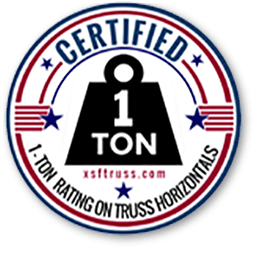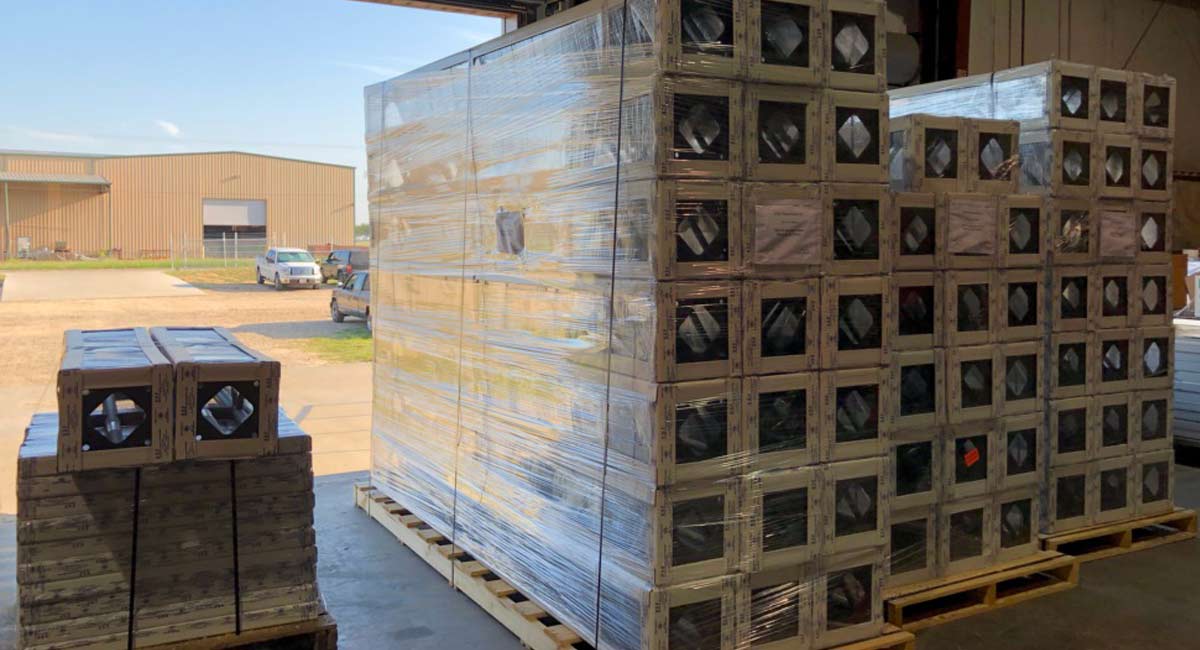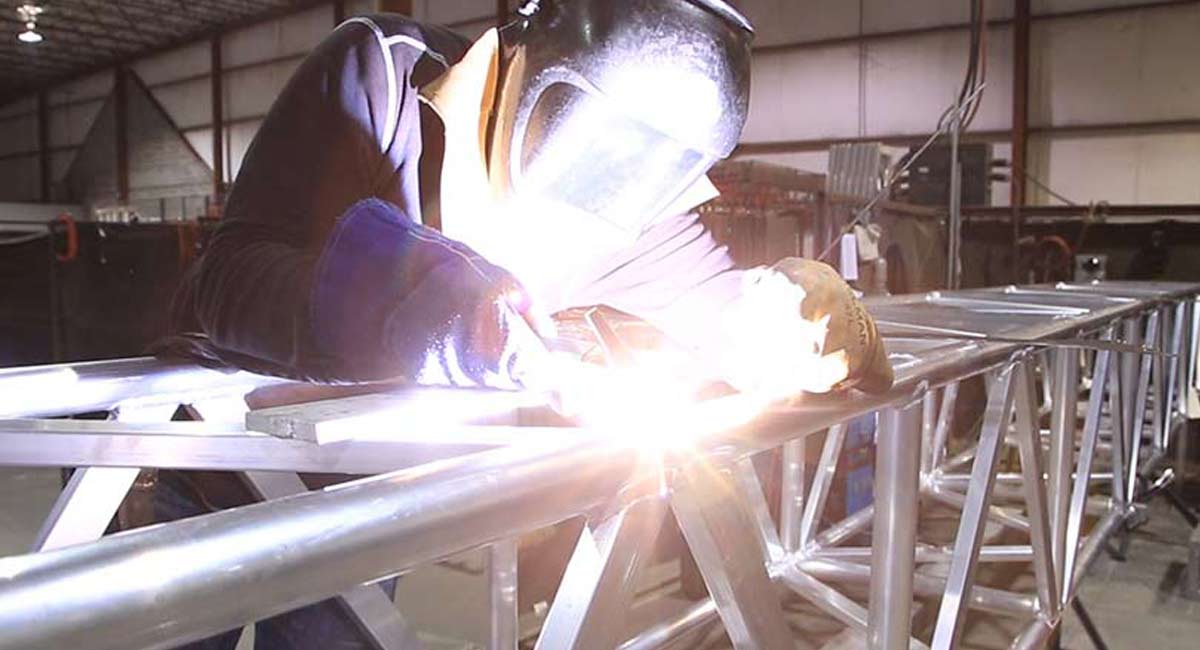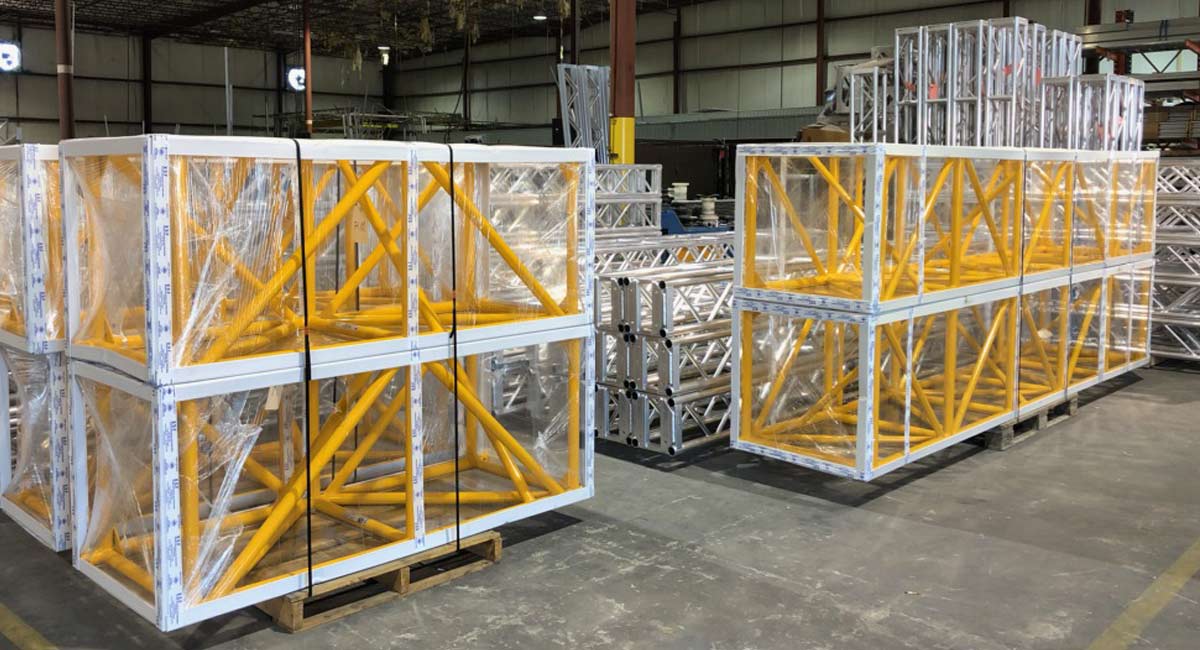Truss Use & Handling
The proper use and handling of aluminum truss can significantly increase the lifespan of any truss. Always avoid unnecessary abrasive or impact damage to the truss such as dragging or dropping the truss if at all possible. Always use enough people to ensure that the truss is properly handled when moving truss by hand. Dollies should also be used when moving truss to prevent dropping or dragging the truss members.
Always use caution when moving trusses with a fork lift and ensure that the person operating the machinery is properly trained and certified in the use of a fork lift. The steel forks of the lift can easily damage the aluminum members in a truss if not used properly. If at all possible place the forks under the truss to avoid damaging the diagonals and internal members.
When shipping or transporting truss, take precautions to properly package and secure the truss and other items around the truss, which will prevent rubbing and/or bouncing that could cause serious damage.
When attaching 2 trusses together always ensure that the connections are secure prior to lifting or loading the truss.
Steel bolts should be tightened with a socket wrench as a minimum, but not so tight that the steel washers damage the aluminum plates on the truss. The nuts need to be snug with no gap between the plates, but not so tight that they cannot be removed with a handheld wrench. When using impact drivers, the driver should be set so that it is not tightening the nuts beyond what you would typically see with a handheld wrench. More importantly, not so tight that the steel washer is damaging or leaving an imprint on the aluminum plate..
All fork end clevis pins should be secured with R-clips prior to use. Once the trusses are connected together the span acts as a single truss.
It is important to note that when connecting multiple pieces of truss together, the diagonal pattern in the side of the trusses must form a continuous pattern throughout the span.
2000 POUND TRUSS LOAD RATING ON HORIZONTAL MEMBERS
XSF has not only passed the base qualifications for truss strength, but has completely blown the standard out of the water! “XSF has a certified load rating on horizontal members that is 8 times more than other truss manufacturers!”

When rigging a truss always ensure that the rig point is located at a panel point or node. This includes rigging to support structures above as well as rigging lighting, sound, prop, or video applications hung from the truss. The truss has been designed so that rigging may be applied either to the top or the bottom of the truss as long as the rigging is at a panel point.
The use of C-clamps is not recommended on aluminum truss. The steel bolt in the C-clamp can easily damage the aluminum chords of the truss. Damaged truss chords cannot be easily repaired and generally renders a truss unsafe and void of the manufacturer’s warranty.
When handled properly aluminum truss is a relatively maintenance free product with a long life expectancy.




